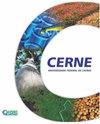油松混合效应分段锥度模型的拟合与标定
IF 0.7
4区 农林科学
Q3 FORESTRY
引用次数: 4
摘要
锥形模型是现代森林清查中的几种必要工具之一,可以提供树干上任何一点的直径信息,这些信息也可以用于估计树干体积。在这项研究中,我们使用非线性混合效应(NLME)建模方法来最小化构造锥方程中存在的统计问题。使用这种方法拟合了Max和Burkhart(1976)的分段锥度模型,以考虑棕松(Pinus brutia Ten.)树干锥度的树内和树间变化。基于评价统计,包括随机效应参数β1、β3和β4的模型是最好的。随机参数的包含并没有完全消除残差中的异质方差和自相关。将方差函数和连续自回归误差结构(CAR(1))结合到NLME-Max和Burkhart模型中,消除了残差中的异方差和自相关。上部树干直径用于将树干锥度模型定位到单个树木。为此,两种不同的测量方案被评估为一种和两种上阀杆直径测量。随机参数的加入提高了锥形模型的预测能力,特别是基于上部茎直径测量的茎中下部。因此,建议使用上部树干直径测量进行校准,以提高树干锥度模型的树级精度。1斯巴达应用科学大学林业学院,32260,伊斯帕塔,土耳其,ORCID:0000-0003-2132-2589a,0000-0001-5798-3421b本文章由计算机程序翻译,如有差异,请以英文原文为准。
FITTING AND CALIBRATING A MIXED-EFFECTS SEGMENTED TAPER MODEL FOR BRUTIAN PINE
Taper models are one of several necessary tools in modern forest inventory, giving information on diameter at any point along the tree stem and this information can also be used to estimate stem volume. In this study, we used nonlinear mixed-effects (NLME) modeling approach to minimize existing statistical problems in constructing taper equations. A segmented taper model of Max and Burkhart (1976) was fitted using this approach to consider for withinand between-tree variation in brutian pine (Pinus brutia Ten.) stem taper. Based on evaluation statistics, the model including random-effects parameters β1, β3 and β4 were found to be the best. Inclusion of random parameters were not completely eliminated heterogenous variance and autocorrelation in residuals. Incorporating variance function and a continuous autoregressive error structure (CAR(1)) to NLME Max and Burkhart model removed the heteroscedasticity and autocorrelation in residuals. Upper stem diameters were used to localized stem taper model to individual tree. For this, two different measurement scenarios were evaluated as one and two upper stem diameter measurements. Inclusion of random parameters were improved the predictive capability of taper model in particularly the middle and lower sections of stem based on upper stem diameter measurements. The calibration using upper stem diameter measurements can improve the tree-level accuracy of stem taper model is therefore recommended. 1Isparta University of Applied Sciences, Faculty of Forestry, 32260, Isparta, Turkey, ORCID: 0000-0003-2132-2589a, 0000-0001-5798-3421b
求助全文
通过发布文献求助,成功后即可免费获取论文全文。
去求助
来源期刊

Cerne
农林科学-林学
CiteScore
1.60
自引率
0.00%
发文量
2
审稿时长
6-12 weeks
期刊介绍:
Cerne is a journal edited by the Federal University of Lavras, Minas Gerais state, Brazil, which quarterly publishes original articles that represent relevant contribution to Forestry Science development (Forest ecology, Forest Management, Silviculture, Technology of Forest Products).
 求助内容:
求助内容: 应助结果提醒方式:
应助结果提醒方式:


